Patrick Van Caeckenbergh
Patrick Van Caeckenbergh
31.09.2013 > 17.11.2013
For more than twenty years, from the sanctuary of Sint-Kornelis–Horebeke, in the Flemish Ardennes, Patrick Van Caeckenbergh (°1960) has worked on a peculiar artistic universe that consists of sculptures, assemblages, models, collages and drawings. Throughout the international art world his work is widely known and highly valued. In 2012, Museum M organized the large retrospective La Ruine Fructueuse, while this year his work makes up part of Il Palazzo Enciclopedico, the central exhibition of the Venice Biennale.
Less well known is the fact that the artist originally hails from Aalst and there, in the late 1970’s, he enjoyed his first academic training. The inauguration of the sculpture, Het Neusje (the little nose), at the Verbrandhofstraat roundabout, a stone’s throw from Netwerk, offers a great opportunity to view the work De Wieg (the cradle, 1999-2009) for the first time publically since it was purchased by the City Aalst. Flanked by models from this work, as well as some other pieces on loan from the collection of fellow townsman, Guido De Bruyn, this presentation sketches a picture in miniature-form, the fabled spectrum of an artist who is very at home upon the platform of contemporary art: the ultimate space where there is still place for magic and imagination.
Departing from a fairy tale world, at the same time the works are driven by an unquenchable thirst for knowledge in all scientific fields, and thus Patrick Van Caeckenbergh sets about the cartographic – philosophical ordering of worldly phenomena and systems. His highly personal artistic research, through which he presents life as it has presented itself visually to him, invariably goes hand in hand with scientific study.
The constant attempt to make life more comprehensible to the world puts the artist into a conceptual process of deconstruction and reduction that also translates into a concrete procedure of miniaturization. This explains the important status of models in his work. In the presentation we see the meticulously detailed models of De Wieg and Het Bevattingsvermogen (The Comprehension, 2003), a permanent art integration on the website of the Vlaamse Milieumaatschappij in Aalst.
The installation of Het Neusje at the roundabout sees the artist in the public space more as a gesture than integration. The work came about via a specific commission, which was achieved without the usual methods of the artist to engage the local residents in the creative process. Being very familiar with the DNA of his hometown, the artist took into consideration the carnival-like image of the city and the historical function of a roundabout as a starting point for the work. The bluestone base of the sculpture, finished with a wrought iron gate, is a direct reference to the pedestal that encloses the statue of Dirk Martens on the City Square. This may possibly be a subcutaneous circular reference to that fellow resident from the Renaissance, who also enjoyed an irrepressible fascination with science and attempts to grasp and depict life’s magic, with little shyness in regard to story telling.
From Netwerk you can take a short walk that leads you alongside Het Neusje and Het Bevattingsvermogen. A map of the art-route is available at the reception desk. More background information regarding the integration of Het Bevattingsvermogen is featured in a documentary video in Netwerk library.
